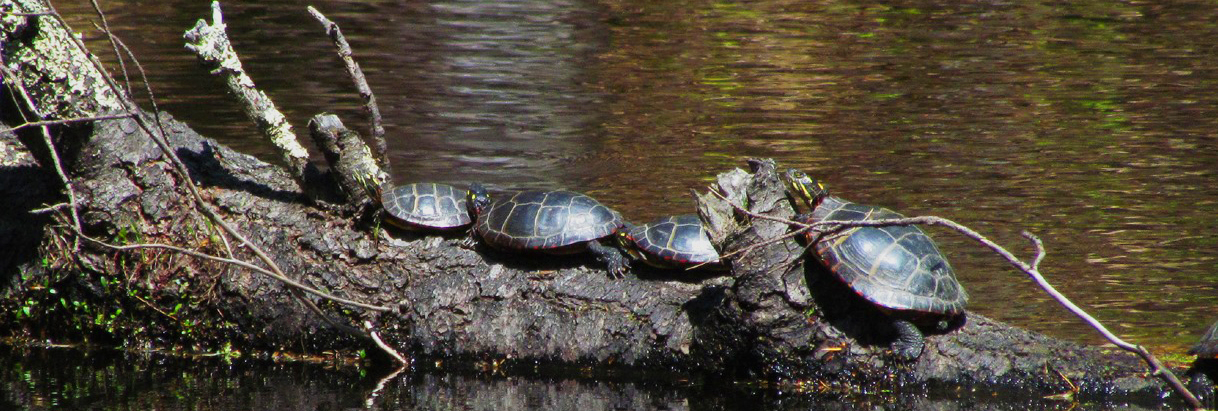C. A LESSON IN POINT OF VIEW
Overview:
As the film and chart make clear, people's view and use of the Lamprey River have changed over time. Several exercises can help students consider how our needs influence our way of seeing a natural resource such as the Lamprey River and how our point of view in tum influences the way we use or abuse that resource. Native Americans and early settlers looked at the river and saw a plentiful food source and a relatively easy mode of transportation. As settlers quickly advanced from a subsistence lifestyle, they also saw the river as a source of power. When electricity carried energy far from its initial power source and roads replaced rivers, we lost our immediate, familiar contact with the Lamprey. What has changed in our current needs and perspective toward nature to make us more aware of the river again?
Learning Objectives:
Students will
- consider the effects of personality, experience, and need on the way people view nature;
- consider how point of view affects the use and treatment of nature.
Materials:
- a collection of optical illusions
- various objects for procedure #3
- varied descriptions of something in nature for exercise #4
Supplementary materials:
- Changes in the Land, William Cronon (see "Resources")
- Literature and the Land, Emma Wood Rous (see "Resources")
Procedure:
One or more of the following suggestions can be used to initiate a discussion about observation and point of view:
1. Bring in a series of optical illusions (old woman/young woman, the vase or two profiles, holograms, "find the hidden rabbits," etc.) and let students play with them. Discuss what can be learned about how context, stereotypes, and first impressions influence what we see.
2. Ask all students to describe the same object in writing or by drawing. How and why do their descriptions differ? Can their descriptions be grouped into categories? What? (e.g., realistic, scientific, poetic, symbolic, historical, etc.)
3. Arrange a group of objects in the middle of the room with students seated around the arrangement. What do people see from different parts of the room? How is this analogous to the way people from different "perspectives" view a resource like the Lamprey River?
4. Read a series of descriptions of something in nature (water, trees, rocks, mountains) and compare what they include in the description with the writers' interests and purpose. Include, for example, a dictionary definition, a myth, a poem, and descriptions from a field guide, a historian, an economist, and a scientist.
Discussion:
What different groups have had an interest in the Lamprey and how might their interests have influenced what they saw and how they treated the river? For example, how did Native Americans and European settlers view the river and did their views lead to conflict? How did timber cutters' and mill operators' needs conflict? (Spring log runs jammed mill turbines.) How would a dam developer's view of the river conflict with a river conservationist's view? What do we do when points of view conflict? ...when a human point of view conflicts with what is best for the river? These issues can be discussed again when students do the "Land Use Issues" in section IV.
Extensions:
The "Perception" chapter of Literature and the Land by Emma Rous describes in detail the effect of point of view on natural resources using readings, student activities and writing. Chapters on "Myths and The Golden Age" and "The New World" introduce readings about land use by Native Americans, settlers, developers, and conservationists that closely parallel the historical uses of the Lamprey River. Changes in the Land by William Cronon describes Native American and early settlers' use of land in New England. Peter Little Bear by Dave Allan of Lee tells the story of a Native American boy growing up along the Lamprey. Contact the Lamprey River Advisory Committee (info@lampreyriver.org) for information on how to get the book.

